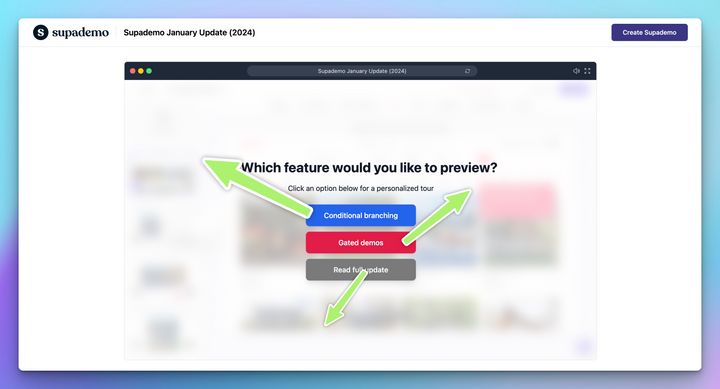In today's competitive marketplace, launching a new product or service requires more than just a great idea. It requires a well-thought-out go-to-market (GTM) strategy. A go-to-market strategy is a plan that helps businesses position their offerings, define their target customers, and coordinate their messaging to ensure maximum sales and customer satisfaction.
In this article, we will explore what a go-to-market strategy is, why it is relevant for businesses in the B2B space, the benefits of using a go-to-market plan, and the steps to building an effective go-to-market strategy.
What is a Go-to-Market Strategy?
A go-to-market (GTM) strategy is a comprehensive plan that outlines how a company will bring a new product or service to market. It helps businesses define their target market, position their offerings, and coordinate their marketing and sales efforts to maximize revenue and customer satisfaction. A typical go-to-market strategy includes target market profiles, a marketing plan, and a concrete sales and distribution strategy.
There are three primary situations where a go-to-market strategy is necessary:
Launching a new product in an existing market: When introducing a new product to an existing market, a go-to-market strategy helps businesses differentiate their offering from competitors and identify the most effective marketing and sales tactics to reach their target customers.
Launching an existing product in a new market: When expanding into a new market, a go-to-market strategy helps businesses understand the unique needs and preferences of the new market, adapt their messaging and positioning, and identify the most effective channels to reach their target customers.
Testing a new product's market for growth: Before investing heavily in the development of a new product, businesses can use a go-to-market strategy to gather market intelligence, validate the market need, and identify potential barriers to success.
For businesses in the B2B space, go-to-market strategies are particularly relevant. They provide the information and insights companies need to effectively position themselves against competitors, create scalable inbound and outbound models, and leverage appropriate tactics to achieve their business goals.
Benefits of Using a Go-to-Market Plan
Implementing a well-crafted go-to-market plan offers several benefits for businesses in the B2B space. Here are six key advantages of using a go-to-market strategy:
Increased Revenue: A well-executed go-to-market plan helps businesses understand their target customers and their needs, allowing them to develop products and services that will be highly valued in the market. By creating offerings that address specific pain points and deliver unique value, businesses can generate more revenue and drive sustained growth.
Improved Brand Recognition: A go-to-market strategy includes marketing tactics that increase brand recognition and visibility. By effectively communicating the value proposition of their offerings and consistently engaging with their target audience, businesses can establish a strong brand presence in the market. This not only helps customers quickly identify their products or services but also builds trust and credibility, leading to increased customer loyalty.
Reduced Cost: Implementing a go-to-market strategy is a cost-effective approach to launching a new product or service. By planning and having a clear strategy in place, businesses can avoid wasting time and money on tactics that may not yield the desired results. A well-defined go-to-market plan allows businesses to focus their resources on the most effective marketing and sales activities, minimizing unnecessary expenses.
Increased Efficiency: A go-to-market plan helps businesses set clear goals and define the steps needed to achieve them. By providing a roadmap for marketing and sales activities, a go-to-market strategy ensures that teams work more efficiently and effectively. This leads to better resource allocation, improved customer experience, and faster time to market, ultimately driving increased profits.
Improved Customer Relationships: A go-to-market strategy helps businesses establish strong customer relationships and build trust in the marketplace. By understanding their target customers' needs and preferences, businesses can develop high-quality products and services that address their pain points. This not only creates a positive brand image but also fosters customer loyalty and advocacy.
Competitive Edge: An effective go-to-market strategy gives businesses a competitive edge in the market. By thoroughly researching the market, understanding customer needs, and identifying potential opportunities, businesses can position themselves for success. A well-executed go-to-market plan enables businesses to stay ahead of their competitors, launch new products and services with confidence, and achieve sustainable growth.
Different Types of Go-to-Market Strategies
There are two main types of go-to-market strategies: sales-led and product-led. Each approach has its own advantages and is suitable for different business models.
Sales-Led Go-to-Market Strategy: In a sales-led go-to-market strategy, businesses focus on using B2B marketing to generate interest in their products or services. This approach involves salespeople reaching out to prospects and working to convert them into customers. Sales-led go-to-market strategies are commonly used by B2B SaaS companies and require accurate and compliant B2B data to target key audiences effectively.
Product-Led Go-to-Market Strategy: In a product-led go-to-market strategy, the product itself serves as the primary sales driver. The goal is to provide so much value to users that they are compelled to upgrade or purchase additional features. Product-led go-to-market strategies are often seen in companies that offer freemium models or have self-service onboarding processes. Examples of successful product-led growth companies include Calendly and Slack.
When choosing a go-to-market strategy, businesses should consider their target market, product offering, and desired customer acquisition and retention models. It's important to align the go-to-market strategy with the overall business strategy and goals to ensure maximum effectiveness.
Steps to Building a Go-to-Market Strategy
Successfully launching a new product or service requires careful planning and strategic thinking. Here is a six-step framework for building an effective go-to-market strategy:
1. Define Your Ideal Customer Profile (ICP)
Before launching any go-to-market activities, it is crucial to define your ideal customer profile. Your ICP is a comprehensive description that outlines the characteristics of your perfect customer. It includes details such as their industry, job title, pain points, and challenges they face in their day-to-day operations. To develop your ICP, you need accurate and up-to-date B2B data that can help you identify and understand your target customers effectively.
2. Research Your Competitors
Understanding your competitors and the competitive landscape is essential for a successful go-to-market strategy. Conduct thorough research on your competitors, including their offerings, pricing, target market, and messaging. Analyze their strengths and weaknesses, and identify opportunities to differentiate your product or service. This research can help you position your offering effectively and develop a unique value proposition.
3. Develop Your Messaging
Effective product messaging is crucial for capturing the attention and interest of your target customers. Start by listening to sales demos or shadowing sales representatives to understand the language and pain points of your potential customers. Pay attention to the phrases they use and the challenges they face. Incorporate this language into your messaging to resonate with your target audience. Additionally, analyze your competitors' messaging to identify gaps and opportunities for differentiation.
4. Set Targets
Setting clear targets is essential for measuring the success of your go-to-market strategy. Determine the key performance indicators (KPIs) that align with your business goals. For outbound activities, establish targets for activities such as cold calls, emails, and LinkedIn messages. Use historical data to estimate the number of meetings each sales representative will book and factor in conversion rates to determine the number of opportunities and closed deals. For inbound activities, set targets for lead generation, website traffic, and conversion rates.
5. Choose Your Tactics
To reach your target customers effectively, select the most appropriate tactics for your go-to-market strategy. Consider using data-driven approaches such as account-based marketing (ABM) and targeted advertising. Leverage high-quality B2B data providers to enhance your prospect targeting and ensure you engage with the right individuals. Develop a content plan that aligns with your target customers' needs and preferences. Consider partnerships with complementary businesses to expand your reach and generate awareness.
6. Provide Feedback and Iterate
Building a go-to-market strategy is an iterative process. Establish a feedback loop between marketing, sales, and product development teams to gather insights and drive continuous improvement. Regularly review and analyze the performance of your go-to-market activities, and make data-driven decisions to optimize your strategy. Encourage collaboration and communication between teams to ensure alignment and shared learnings. By consistently evaluating and adjusting your go-to-market strategy, you can adapt to market changes and drive ongoing success.
Conclusion
A well-executed go-to-market strategy is essential for businesses looking to launch new products or expand into new markets. By defining your ideal customer profile, researching your competitors, developing compelling messaging, setting clear targets, choosing effective tactics, and providing ongoing feedback, you can create a go-to-market strategy that drives revenue growth, enhances brand recognition, and establishes a competitive edge. Remember to align your go-to-market strategy with your overall business goals and continuously iterate based on market feedback and performance data. With a robust go-to-market strategy in place, you can successfully navigate the complexities of the modern marketplace and achieve sustainable business growth.




